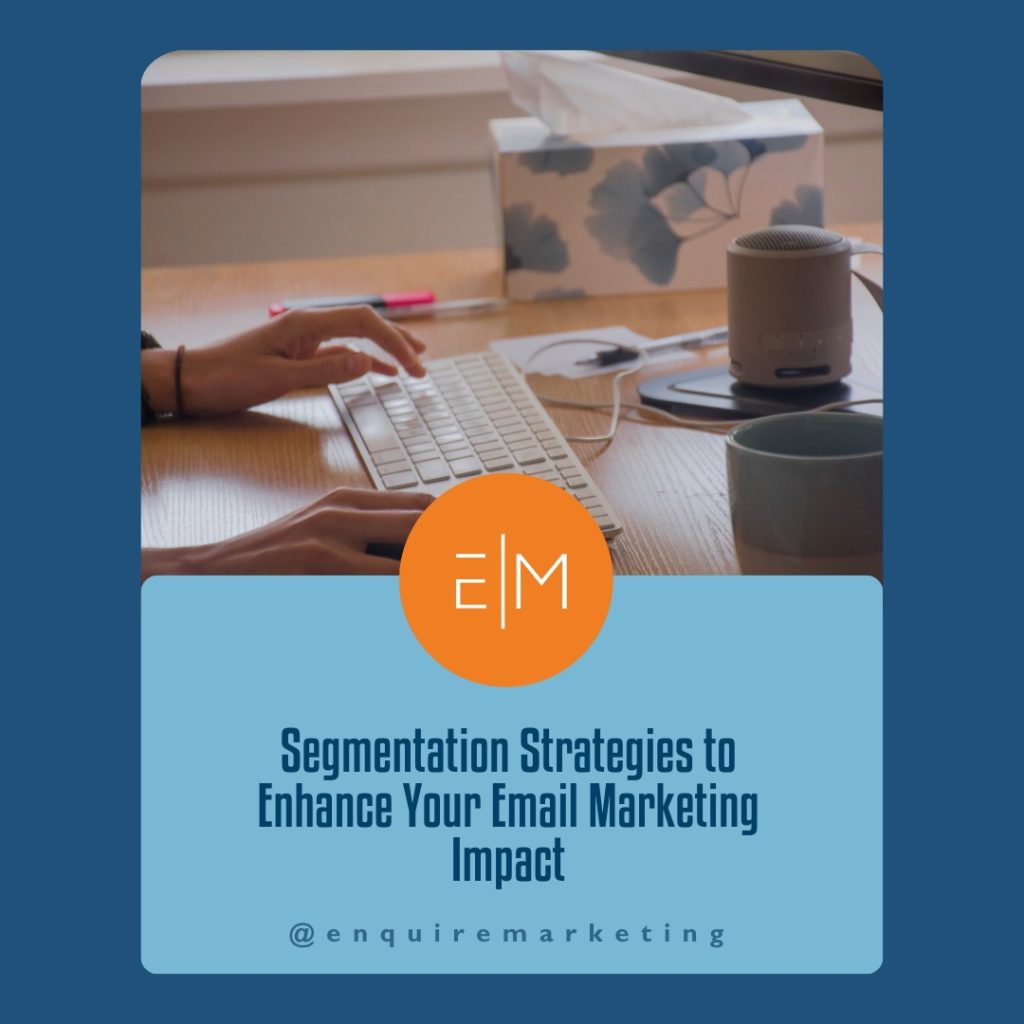Segmentation Strategies to Enhance Your Email Marketing Impact
In the world of email marketing, one size does not fit all. Customising your approach through segmentation can dramatically improve how you connect with your audience, enhance engagement, and drive conversions. If you’re new to marketing or looking to refine your email strategy, understanding the basics of segmentation can set you on the path to greater success. This blog simplifies segmentation strategies, making them accessible for beginners and showing you how to implement them effectively.
What is Segmentation?
Segmentation in email marketing means dividing your email list into smaller, specific groups based on certain criteria. This allows you to send more personalised and relevant emails to each group rather than blasting the same message to all your subscribers. The result? Higher open rates, increased click-throughs, and, ultimately, better conversion rates.
Why Segment Your Email List?
- Increased Relevance: Tailored messages resonate more with recipients, making them feel understood and valued.
- Higher Engagement: Personalised emails are more likely to be opened and acted upon.
- Better Conversion Rates: Relevant content drives action, whether making a purchase, signing up for a webinar, or following your brand on social media.
- Reduced Unsubscribe Rates: People are less likely to unsubscribe when emails are relevant.

How to Segment Your Email List
Here are some practical ways to segment your email list that can be easily understood and applied, even by beginners:
- Demographic Segmentation: Start with the basics: segment your audience by age, gender, job title, or location. This basic information can tailor your content to match the general interests and needs of each group.
- Behavioral Segmentation: Look at how subscribers interact with your emails and your website. Segment based on their past purchase behavior, email open rates, or content they’ve engaged with. This type of segmentation helps in sending targeted offers and content that aligns with their interests or buying patterns.
- Engagement Level: Group your subscribers by how often they interact with your emails. Send frequent communications to those who engage the most and re-engagement campaigns to those who are less active.
- Customer Journey Stage: Determine where each subscriber is in the buyer’s journey. Are they a new subscriber who needs to learn more about your brand? Or are they a long-time follower who might be ready for more in-depth information or a push towards purchase? Tailoring messages to each stage can lead to more effective communications.
- Purchase History: Use past purchase data to segment customers. You can suggest similar products, send restock reminders, or offer exclusive discounts to repeat customers.
Tips for Effective Segmentation
- Start Simple: Begin with one or two segmentation strategies and expand as you become more comfortable.
- Collect the Right Data: Use sign-up forms, surveys, and interactions to gather valuable data for segmentation.
- Test and Learn: Try different segmentation strategies and keep track of what works best through testing and analysing the outcomes.
Segmentation is a powerful tool in email marketing that can help you communicate more effectively with your audience. By understanding the specific needs and characteristics of different groups within your audience, you can create more engaging and successful email campaigns. Remember, the more relevant the message, the better the response. Start segmenting your email list today and watch your engagement and conversions soar!
For further assistance crafting personalised email marketing strategies that resonate with your audience, contact us at Enquire Marketing. We’re here to help you navigate the complexities of email marketing with ease.

